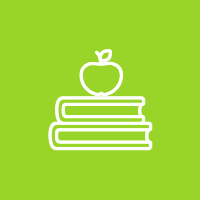Our ears are constantly being bombarded with sound—so much so that we automatically “tune out” a lot of it. Some sounds are “music to our ears,” while others can annoy us and even damage the delicate structures in our ears. This activity helps students “tune in” to the sounds in their environment and helps them identify and lessen local noise problems. They also learn how different sounds in nature have inspired cultural stories.
This is Activity 4, one of 96 activities in PLT’s PreK-8 Environmental Education Activity Guide (available in print or electronically).
To get the activity:
- Check out this online course with an E-Book (with an option to also purchase a printed guide for an additional fee)
- Contact your PLT State Coordinator. During COVID-19, PLT now offers remote professional development to model ways educators can work with students virtually, including adaptations to PLT activities.
Below are some supporting resources for this activity.
STUDENT PAGES 
Download the copyright-free student pages that are included with this activity:
The Story of Marsyas
(PDF)
Spanish Student Page:
La historia de Marsyas
(PDF)
STEM STRATEGIES 
Engage students in real-world applications of STEM (science, technology, engineering, math) education.
Try these STEM Connections for this PLT activity:
RECOMMENDED READING 
Expand your students’ learning and imaginations. Help students meet their reading goals, while building upon concepts learned in this activity, with the following children’s book recommendations:
FAMILY ACTIVITY 
Try a simple variation of this activity to engage children in the outdoors at home. Download this fun and easy-to-do family activity.
ADDITIONAL RESOURCES 
The following tools and resources may be used to enhance the activity.
-
Video Demo: Sounds Around
Watch the Sounds Around Demonstration video (15 minutes). PLT’s Sounds Around engages students to listen and learn from sounds of nature. This video was developed by Danielle Ardrey, Colorado PLT Coordinator, this step-by-step instructional video offers guiding questions and an example of a “sound map”.
-
Woodlands Siesta Activity
Shared by Sandy Greene, an environmental educator in Virginia, this Woodlands Siesta activity helps connect students to the outdoors as they create a sound map and see the forest from a different perspective (while lying in a hammock!). Greene suggests this activity be enjoyed as part of a summer afterschool program or day-time camp. It does require some funding to purchase hammocks or you could use blankets or a tarp instead so students feel comfortable lying on the ground.
Greene was named a National PLT Outstanding Educator in 2006.
-
A Listening Walk
Check out this instructional video for home learners by the Jeffers Foundation: A Listening Walk. It shows children how to practice listening for nature sounds, and how to collect acorns and other natural objects to make a sound guessing game.
-
Acoustical Society of America’s Sound Resources
Explore Educator Resources from the Acoustical Society of America, including lesson plans, activities, and a gallery of interesting nature sounds.
-
Tree Product Images
Print out pages containing many examples of everyday products from trees!
-
Find Nearby Trails and Parks
AllTrails is a free app that helps users discover the outdoors. Use it to find a hiking path suitable for children, to search for local places to bike or fish, or to plan a national park visit.
-
Bird Sleuth
The BirdSleuth Guidebook from the Cornell Lab of Ornithology offers step-by-step instructions to enable families, school groups, and others to get outdoors and connect with nature. Use this booklet in conjunction with PLT lessons, for example, go on a habitat scavenger hunt (Trees as Habitats), create a sound map (Sounds Around), and identify backyard species (Schoolyard Safari and Name That Tree). The BirdSleuth program helps K-12 students participate in citizen science bird projects by guiding them through several tasks, such as using online resources to find your state bird, looking for birds that fit into different groups, practicing bird counting and entering data online, extracting data from eBird about local birds, and taking action to improve bird habitat in your area.
-
Nature’s Sound Map
Nature’s Sound Map is an interactive tool that allows you to listen to clips of nature all over the world. The sounds range from those of an individual animal to entire ecosystems.
-
Singing Songs
Try singing these songs with adapted lyrics to get children excited and focused on what they might hear or what they actually heard on an outdoor hike. Print these lyrics and slip them into plastic page protectors for convenient posting in the classroom or for carrying outdoors.
- “Here We Go on A Nature Adventure” Song: Sung to the tune of “Here We Go ‘Round the Mulberry Bush, ” this song helps students anticipate listening for sounds as we walk to our outdoor meeting spot. Encourage learners to look and listen and use this T-chart to record which living and nonliving things they see and hear outside.
- “In the Forest” Song: After our listening exercise, we gather to share our findings. Students compose their own lyrics for this song by inserting the sounds they heard. “In the Forest” is sung to the tune of “Are You Sleeping.”
-
A Machine That Turns a Tree’s Rings into a Musical Score
Learn about a modified record player that reads growth rings from a tree like musical notes. Created by German artist, this machine uses the annual rings that you find in cross-sections of trees and converts them into piano music.
-
Easy Chart
A free app that can be downloaded onto Apple devices. This is a good tool for teachers and classrooms. Easily create bar, line and pie charts that you can customize, save and e-mail or upload. The charts you create can be saved using multiple color schemes and in multiple sizes. The app also works without an internet connection.
-
PBS Kids Plum Landing
A PBS KIDS environmental science project, PBS PLUM LANDING offers educators fun and engaging resources to get kids outside and connected to nature. Encourage kids to explore their local water systems, find out what happens to life in the desert, and investigate nature’s sounds and smells. Download PLUM LANDING’s free summer camp resources, including interactive games and videos. Furthermore, all of PLUM’s lesson plans are Next Generation Science (NGSS) standards aligned and easy for educators to plug and play throughout their summer programming.
-
Create Your Own Book App
Be the author, illustrator, and editor of your own literary adventure with Book Creator, an app that can be downloaded for the iPad from the iTunes store. Book Creator allows anyone to create and share their own journals, text books, children’s picture books and photobooks that can be designed with a multitude of text and image formatting options. This app offers a variety of printing and electronic sharing options that help its customers of all ages distribute their books to relatives, friends, and colleagues.
-
Nature Maestro® App Series
With Nature Maestro®, sound recordist and composer Dennis Hysom is your guide. Use this series of applications to explore sounds in nature. You might compose a soundscape for the rainforest, build a nature scene using audio paired with imagery, and discover fun facts about animals all along the way. Immerse yourself in these biomes to compose and share creative soundscapes and then share them with others.


